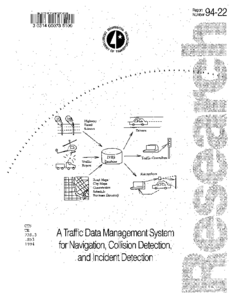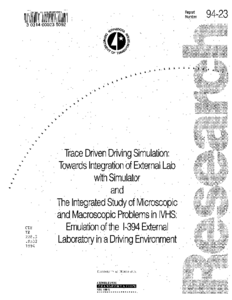Displaying results 1 - 7 of 7
Report on Programmatic Evaluation at the Human Factors Research Laboratory
Date Created
1995-03
Report Number
95-13
Description
Multimedia Information Presentation in Smart Cars and Highways
Date Created
1995-05
Report Number
95-25
Description







